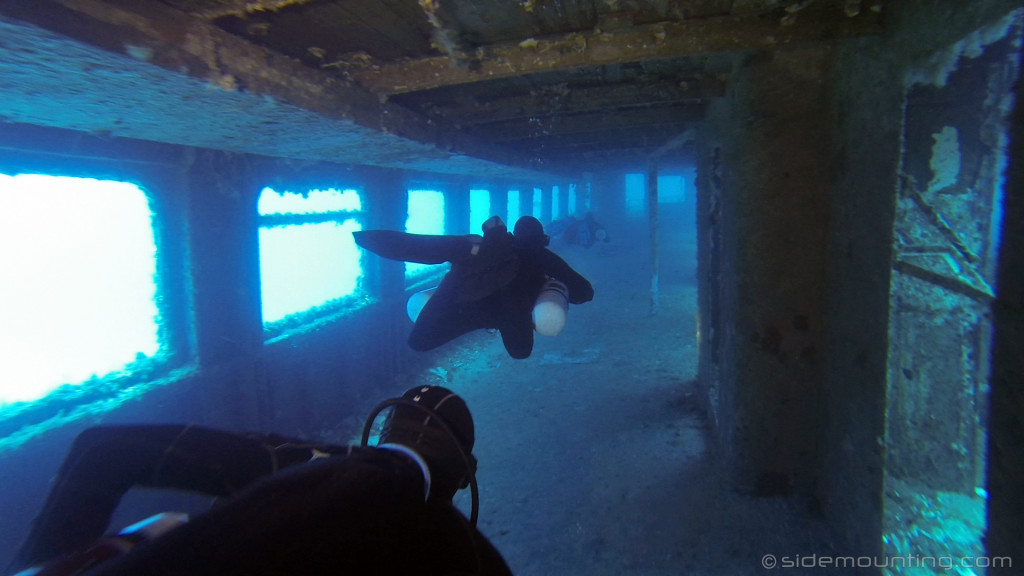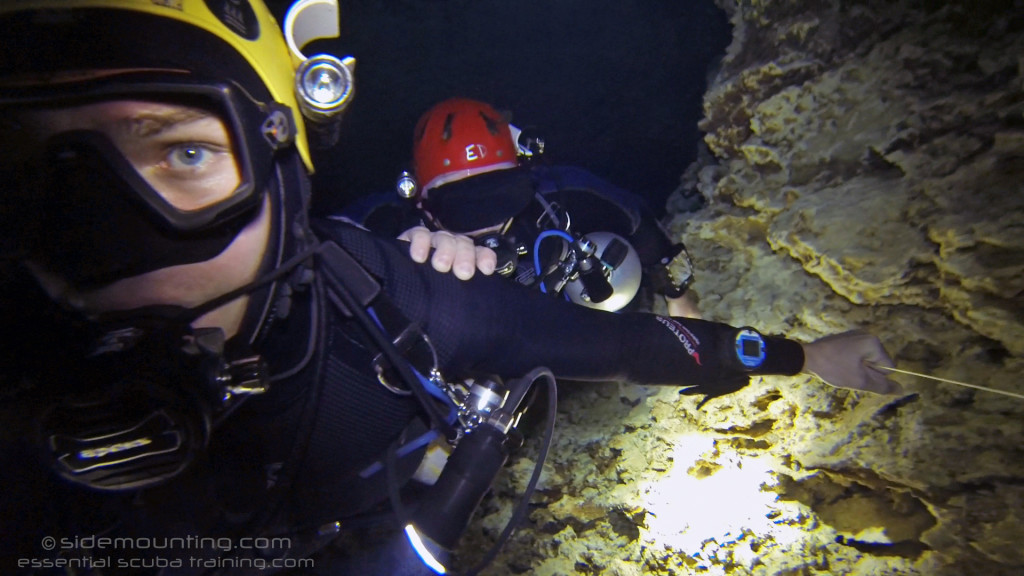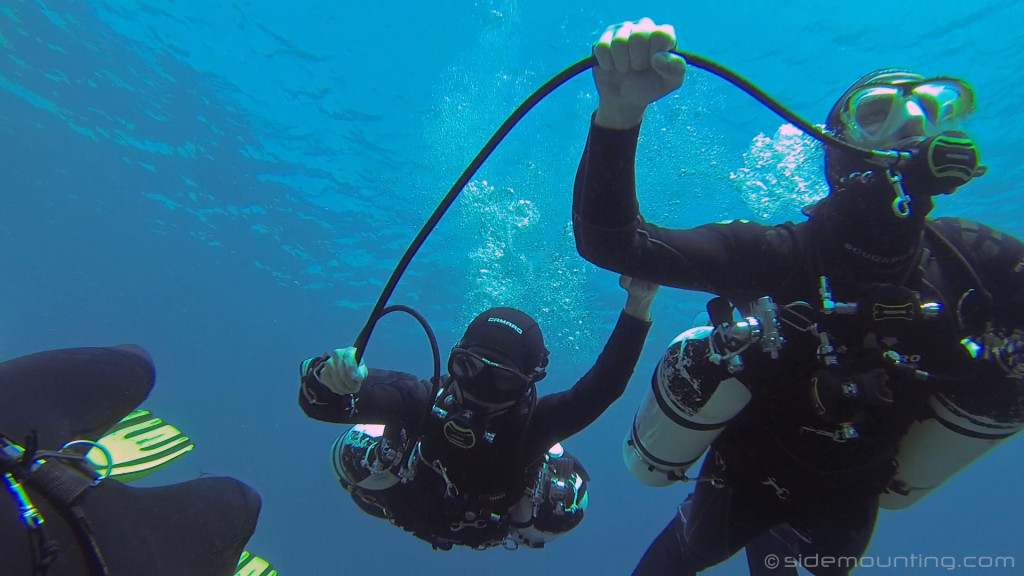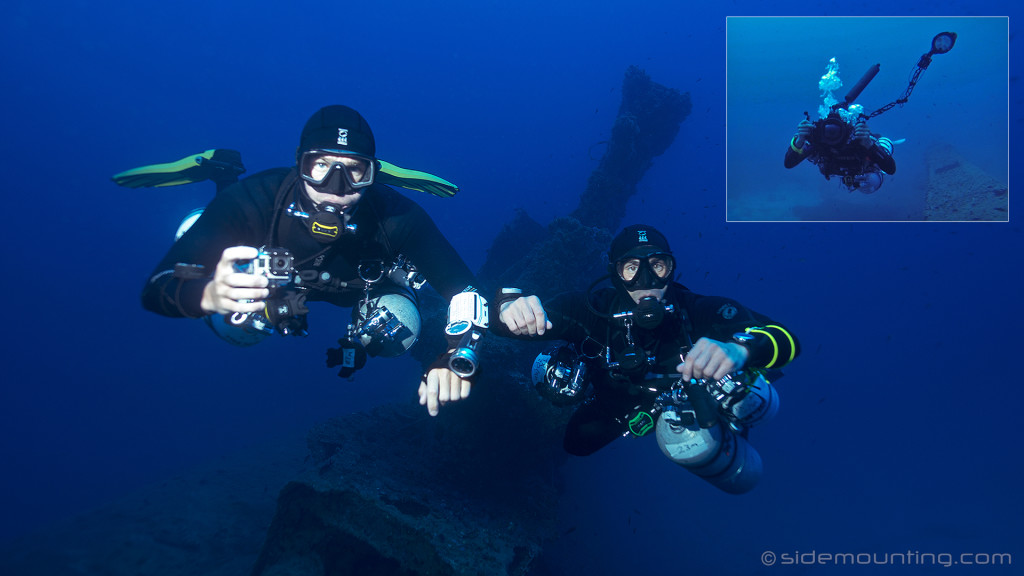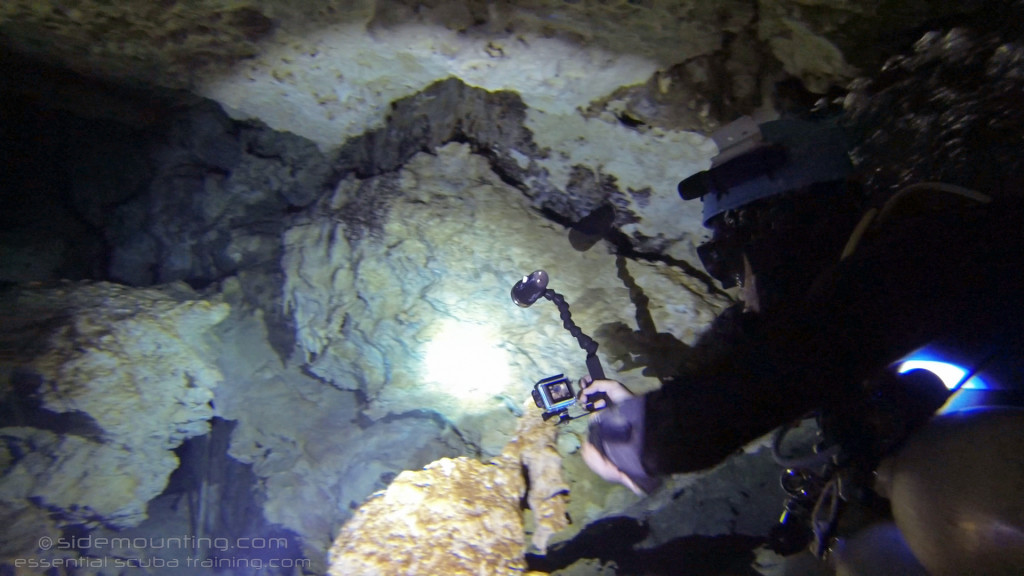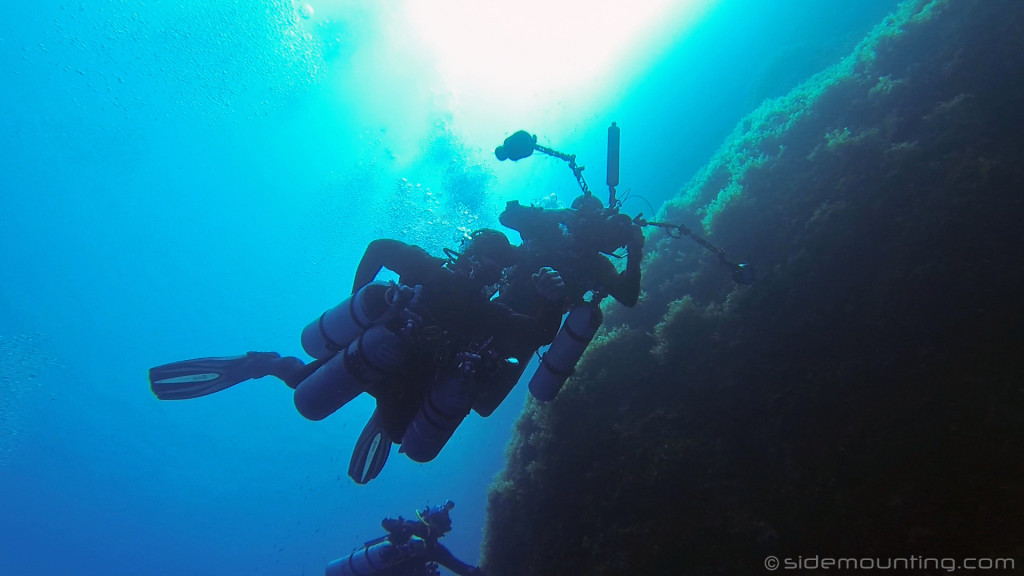Dive Training Blogs
Effectiveness of video recording divers in training
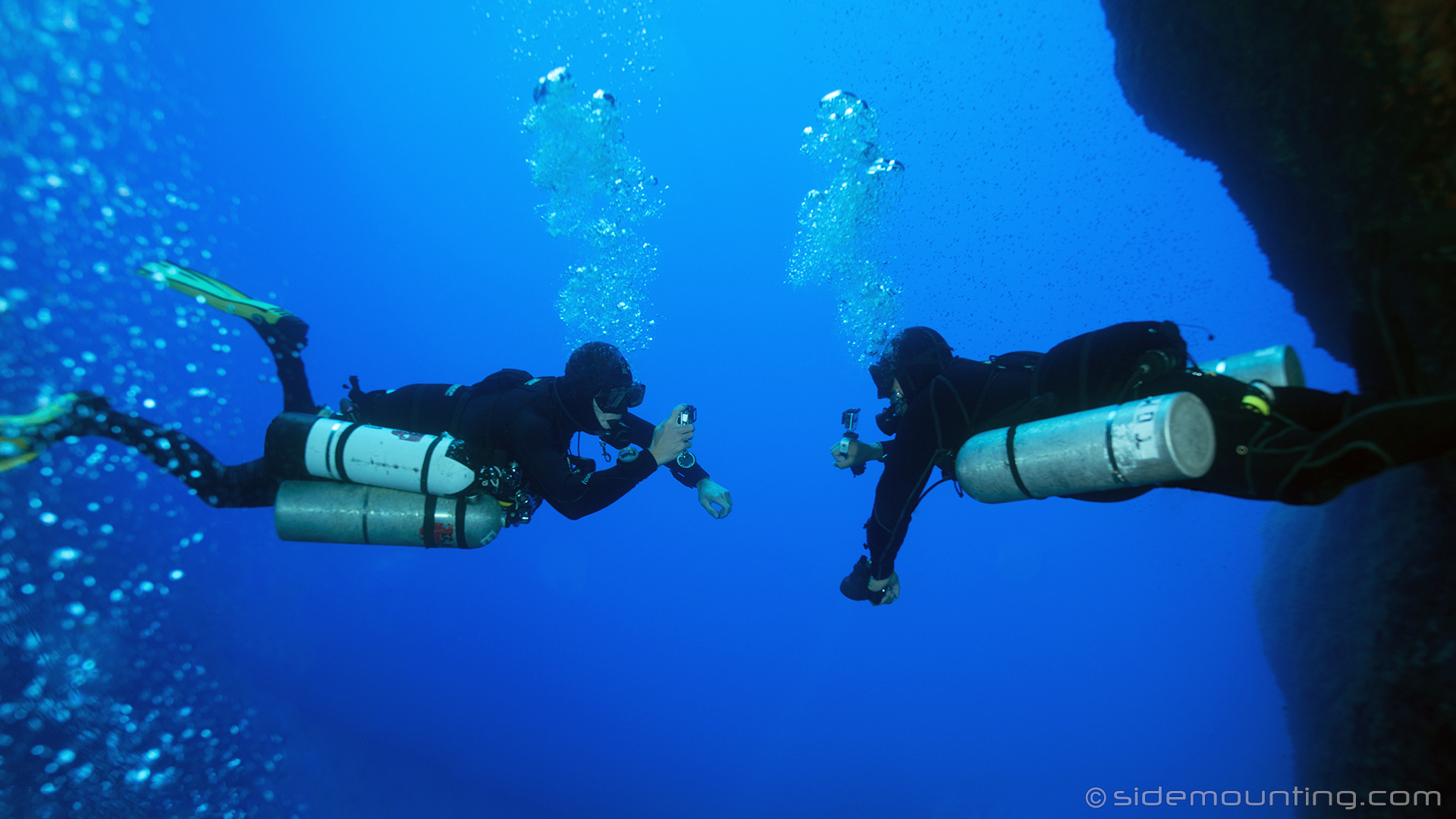
“To video or not to video, that is the question”
Let me start by saying that I use video to record all my students during their training courses. It all comes down to how much quality & value you as the instructor want to add to your courses..? I really believe that if all instructors do not start using video reviewing techniques they will soon find that they will start losing customers – and rightly so!!
This article is to explain the reasons why I choose to use video and give some tips and tricks on the best ways to do it and how to handle the additional problems and concerns with shooting video.
As HD video cameras are getting smaller and smaller, plus relatively low in cost and easy to use, an instructor these days does not have much choice than to shoot video really… if they do not students will most likely turn up to class with their own cameras, which means the students focus will always be on taking videos/pics for sharing with their friends on YouTube and Facebook rather than what they should really be focusing on – learning to dive correctly.
People want memories and they get them by documenting, recording & sharing everything they do or are going to do… this is, after all, a facebook world we live in!!
If an instructor did not offer you video recorded feedback during any advanced diver training levels (meaning anything after your open water course) I would advise you not to take training with that instructor. Why? For the simple reason they either do not understand the advantages what video feedback brings or they are not that capable as an instructor to get you looking good enough to be on video at the level they are training you at!
Important note: If a diver is just learning to dive – for example, doing a discover scuba dive or open water training dive – then I would not advise that the instructor uses the video camera, instead have a professional assistant do any recording.
Advantages of having video feedback
- Allows the instructor to give each student detailed critique of their performance after dive (sometimes whilst underwater, if video camera has a LCD screen playback option and you have enough dive time).
- Students take more interest in their training i.e. they can see if their knee drops or fin blade angle is correct when learning to frog kick, or if they are maintaining trim and breathing control when not moving, etc…
- Giving video feedback greatly speeds up the daily learning process; when a diver views their videos they absorb the feedback in their own preferred style.
- Divers during training perform better as they always think they could at any moment be recorded, so emphasis is on doing skill correctly (performing well).
- Students being able to keep the videos after the course is also very important as the student now has a way to review and practice the correct techniques; this helps the student maintain the high standards set during training.
- Students will play a part in developing their own personalised training materials, which again ensures they continue to dive correctly after training. This is through skill retention as it may be a few weeks/months after their course before they can dive again, so having videos to review is crucial.
- Videos provide a cue/reminder that students can use to mentally rehearse and practice skill out of the water – much better than just in front of the mirror.
- In some cases having the student video record the instructor’s demonstration can really add value during the video debriefing session, and again for the student to bench mark themselves against the instructor after the course.
Good example of effective use of video recording
Let’s look at teaching a diver to backwards kick (usually it takes 2 days to learn):
- Diver receives a thorough briefing including video of the ideal technique & completes dry land simulations of this skill.
- Diver then watches a live underwater instructor demonstration of the skill.
- Diver then attempts the skill (instructor video records student).
- Instructor first demos what the student just did incorrectly and then re-demos what the student needs to change (student video records instructor).
- Now the student tries again (instructor video records student).
- Rest of dive is completed, without diver having unnecessary repetition and frustration.
- Diver reviews the both the student and instructor videos on land after dive and sees what actually happened, leaves then with a clear understanding of what is needed for improvement (skill mastery).
- Diver then (next day) when fresh repeats skill and effectively builds the correct technique as they fully understand what they were doing incorrectly (this maximises there learning curve and training time).
I have found this 8 step method works very well for all skills and the majority of my students are capable of doing some effective back kicking on the 2nd day. Prior to video reviewing I have had much less success and found that it requires a lot more time/dives and much more frustration on both the student & instructor when learning.
Should I video everything..?
No. To be honest this results in too much debriefing time and detracts what can be efficiently learnt each day. I suggest you apply common sense when wondering how much to shoot and very quickly you will get feedback about this.
Best parts to make sure you video are if say a student has a difficulty with understanding what is expected of them, for example they always do a great valve shutdown exercise but at the end they always forget to check which regulator they are breathing from and how much gas in now in both cylinders.
Instructors need to move with the times
“Those who can do, those who cannot teach!! Those who can and do are instructors.”
All instructors should be comfortable and ready at any time to have any of their skill demonstrations video recorded and later analysed by their students. I think doing this is great as it really raises the bar for instructor demonstrations and for sure levels the playing field for students comparing their skills to their instructors and what actually needs to be mastered – “practice what you preach!!”
Does video recording have much impact on your students/instructors..?
Most students start a course saying they have never seen themselves underwater before, then by the end of training like it so much that they usually go straight out and buy themselves an underwater video camera. This is also true for every instructor who has come to me for training – they have seen so much value added using video reviewing they also go out and buy a camera, then say they will be using it for all their future courses too.
Why I think video cameras are not used by instructors
This article is not a review on different video equipment, so I speak from my 3+ years of training and my experience using all the models of GoPro cameras, which are very compact in size, easy to use and not an expensive investment (see pictures).
Over the years I have heard a lot of instructors say “carrying video equipment adds task loading, it’s bulky, gets in the way of diver training, plus it’s expensive!!”
Regarding the “task loading” issue – ask yourself who should be the most comfortable and least task loaded underwater during a training dive. Simple – the instructor. It’s their job to insure the environment they are training you in is suitable for the type of training they are conducting and using a small camera at key points during the dive should not be over task loading them, should it?
Instructors should only teach and make training dives in environments that are conducive to dive training – e.g. a low visibility dive site (only being able to see 1 metre) is not a suitable dive site for compass/navigation training. Actually, I would argue there is no point making a dive in those conditions for any reason, and for sure it is not safe!!
Any instructor that says it’s too expensive to buy video equipment probably is also charging a low amount or close to nothing for their training courses. So to any students out there reading this, please go with someone that offers value in training and they have a solid reputation in the field you’re looking at learning in.
If an instructor offers video feedback during training, they will not be worried about others seeing and critiquing their training methods/videos, so they are standing by the training they are offering, which is great.
Training workshops
Due to many requests, I have decided to offer workshops for divers and instructors on how to effectively use underwater video cameras as teaching tools. Some of the topics covered are setup and storing camera, video features, buoyancy training techniques, what to shoot and when, post dive video analysis and ways to best document and market your dives after training, and using your videos. Remember it is all about maximising your teaching effectiveness.
This article has a comments section below, so if people can put together structured questions or points for discussion on this subject, I will do my best to answer each point raised in detail as I am sure this article could have been 10+ pages long and branch off into some many other areas of diver training.
If you enjoyed the read and found it useful please say so and please share it with any other divers/instructors you think will benefit from it.
Thanks and stay tuned for my next article – it will be on a very important topic related to technical sidemount diving – that is all I can say for now 🙂
Blogs
NovoScuba’s Game-Changing Approach for Dive Store Owners: WE PAY YOU!

 The diving world thrives on passion and adventure, but for many dive store owners, the financial and operational challenges can be as deep as the ocean.
The diving world thrives on passion and adventure, but for many dive store owners, the financial and operational challenges can be as deep as the ocean.
NovoScuba, an emerging force in the diving world, is on a mission to transform this landscape for the better. With a revolutionary approach to dive store and training agency partnerships, NovoScuba is setting new standards for how dive stores can thrive while keeping their focus on delivering exceptional diving experiences.

A New Paradigm: NovoScuba’s Bold Mission
NovoScuba’s mission is straightforward yet profound: to disrupt the traditional dynamics between dive store owners and training agencies. Traditionally, dive stores have been subjected to substantial fees charged by training agencies, for membership, materials and certifications. These costs have often placed a heavy financial burden on store owners, cutting into their profits and limiting their ability to offer competitive prices to customers.
NovoScuba flips the script by offering a model where dive stores earn money, instead of paying high fees. Dive stores receive commissions for every student they register, and their certification costs are covered. This new model not only boosts profitability but also ensures clients get top-quality training at unbeatable prices.
Financial Upsides: Earn From Student Registration
NovoScuba’s approach is simple yet revolutionary. Dive stores partnering with NovoScuba can earn commissions for every student they enroll.
Here’s how it works: For every student enrolled through NovoScuba, dive stores receive a commission. Each student enrolled will receive their e-learning materials and certification credit included in their subscription. This arrangement is a significant departure from the traditional model, where dive stores often struggle to manage high overhead costs related to training fees and certification expenses.

NovoScuba’s approach ensures that dive stores can focus on what they do best—providing top-notch diving experiences—without being bogged down by excessive financial burdens, and the need to carry large stocks of materials.
Quality Training at a Great Price
NovoScuba stands out by offering high-quality, ISO certified, training that doesn’t break the bank, in fact our students will pay less than with most competing agencies. Clients benefit from top-notch education and safety standards at competitive prices. Dive store owners can confidently promote NovoScuba’s programs, knowing they’re offering fantastic training at affordable rates. This balance of quality and affordability helps dive stores build a strong reputation and attract more customers.
Your Brand is Your Business: NovoScuba’s Commitment to Showcasing Your Identity
At NovoScuba, we understand that your brand is your most valuable asset, and we’re committed to putting it front and centre. Unlike agencies that charge high fees to promote their own brand, we believe in investing in yours. With NovoScuba, you won’t be paying to advertise someone else’s logo alone, — our focus is on showcasing your unique identity. Certifications prominently feature your brand, as well as the training agency, reinforcing your store’s image and brand every step of the way. We’re here to support and elevate your brand, ensuring that your investment directly benefits your business.
Affordable Membership: An Investment in Your Success
NovoScuba’s membership model is designed with dive store owners in mind. Membership fees are kept low and include annual Pro member fees for your team. Payment can be made monthly or annually in your local currency, avoiding the hassle of exchange rate fluctuations. NovoScuba promises no exchange rate changes without a six-month notice, ensuring financial stability and simplifying budgeting. With a membership lasting 12 months from date of joining, you’ll enjoy a full year of NovoScuba’s benefits and support.

Streamlined Operations: Simplifying Your Workload
Handling administrative tasks can be a challenge, but NovoScuba makes it easier. We’ve streamlined certification procedures and reduced paperwork to help dive stores operate more efficiently. Certification processing is quick and straightforward, allowing more focus on teaching and customer service. Our system minimises bureaucracy by storing necessary forms in student profiles, reducing paperwork and administrative delays.
Crossover Made Easy
For dive stores looking to transition to NovoScuba’s model, the crossover process is designed to be smooth and hassle-free. NovoScuba provides support to ensure that the transition is as seamless as possible, helping dive store owners integrate into the new system with minimal disruption. Experienced dive Pros don’t need to undergo extensive retraining. Our crossover is designed to familiarise Pros with NovoScuba’s user-friendly platform, standards and course structures, and not to waste time and expense re-training in water.
With just a few simple steps, you’ll be ready to offer top-notch training through NovoScuba.
Comprehensive Business Support and Training Included in Your Membership
NovoScuba goes beyond financial benefits by offering experienced support and training. This value added service includes:
- Business Training: Optimise your operations with guidance on marketing, customer service, and best practices.
- Marketing and Promotion: Access resources to attract new customers and boost your store’s visibility. Enjoy cross promotions with NovoScuba to gain increased exposure.
- Ongoing Support: NovoScuba’s commitment to its partners extends beyond initial training and setup. The company offers ongoing support to address any issues or questions that arise. This continuous support ensures that dive store owners have a reliable resource to turn to whenever they need assistance.
Embracing Digital Natives: Instant Evolution and Continuous Improvement
NovoScuba’s digital-native approach is a game-changer. Leveraging cutting-edge technology, we ensure our services evolve and improve swiftly. Dive stores benefit from instant updates, the latest features, enhancements, and effective solutions, keeping them ahead of the curve. This continuous improvement helps dive stores stay competitive and deliver exceptional services. Whether it’s a new course update, additional marketing resources, or improved e-learning functions, NovoScuba’s digital infrastructure ensures that dive stores are always equipped with the most current and effective solutions. This continuous evolution not only helps dive stores stay ahead in a competitive market but also ensures they consistently provide top-quality services to their clients.
Why Is NovoScuba Doing This? – Fair Profit Sharing for Greater Access and Growth
At NovoScuba, we’ve taken a bold step by paying commissions to stores rather than following the traditional model of training agencies charging high fees. Our mission is to make diving accessible to everyone and to foster a growing community of new divers and continued education. By redistributing profits more equitably between stores and training agencies, we aim to create a more supportive and collaborative environment within the industry. We believe this approach not only helps individual stores thrive but also stimulates overall growth and innovation in diving. Our commitment to fair profit sharing reflects our dedication to the long-term health and expansion of the diving community.

Everyone is getting a piece of the pie.
Getting Started: Join the NovoScuba Revolution
Ready to revolutionise your dive store experience? NovoScuba is here to support your journey toward reduced costs, increased profitability, and enhanced operational efficiency. Get in touch with our team to learn how NovoScuba can transform your business.
For more information, email info@novoscuba.com or visit www.novoscuba.academy.
Blogs
Are you ready to become a Cave Diver?

By Marissa Eckert
What are the requirements to start cave diving? What do I need to do to be prepared for cave training? These are all questions I get asked by so many potential students. There are many options when coming up with an answer. The first option, and the easiest, would be to go the training agency website and look up the requirements to take the class. However, this leaves a lot open for interpretation and doesn’t mean you will necessarily be ready. Like anything, there always needs to be minimum requirements. But is that enough? Maybe for some people it is, but for most people it’s not.

So, what are the requirements?
TDI breaks cave training down into three different levels. Those levels are cavern, intro to cave, and full cave. To start cavern the requirements state that you must be 18 years old or 15 years old with parental consent, have an Open Water Certification, and a minimum of 25 logged dives. This doesn’t sound like much. So, what do I tell my students when they ask me? First, I find out if they are only interested in cavern or if they are interested in potentially progressing into cave diving. If they are interested in progressing into cave diving, I always strongly suggest they get comfortable with a dual configuration first. This configuration can be side mount, back-mounted doubles, or even a rebreather. The main things I tell everyone they need to have down are buoyancy, good trim position, the ability to hover in place motionless without moving their hands or feet, and good overall awareness. This means awareness of oneself and what your body and equipment are doing, but also total awareness of what is going on around you.

So, what does all this mean?
Many times I’ve had students show up thinking they had all these things mastered only to quickly realize they have a long way to go. Which by the way, is okay! After all, we all start somewhere and progress at different paces. The most important thing is to be open to feedback. But there are also ways to prepare yourself better. First and foremost, when starting down this route it is critical to find a good instructor. Take time to look up instructors, ask questions, interview them, look at their past students, look at what type of diving they are doing, and most importantly ask questions! Find out what techniques they use during class.
I have found that video recording students when they are struggling with something gives them a great perspective to see what they are doing wrong and helps them visualize and correct it. Does the instructor look good as a diver? Whether you like social media or not, the internet can be a great place for research. When looking at a diver they should look in trim, almost like they are laying flat on a table. In videos are they finning with their hands? Are their feet constantly moving? Are there things dangling below their body? All equipment and hoses should be extremely clean and contoured to the body.
The most important question to always ask during training is WHY? There should always be a why behind everything we do. And it should never just be because I said so. Make sure the instructor knows why they are telling you to do something a particular way. Everyone can always learn new ways of doing things, instructors included.

How can you truly prepare yourself?
A good idea is to record video of yourself or have a friend record you while diving. Send it to your instructor ahead of time, so they can give you feedback and let you know if there are things you need to work on. There is no certain number of years to be diving, or a certain number of dives to have, that says yes you will be ready. Every individual learns at a different pace. If a class is only offered in a minimum number of days with a maximum number of students allowed, be aware that this means less time practicing each skill. For this reason, you might be better suited doing one-on-one training or having a regular buddy take the class with you. This ensures you are comfortable with each other and familiar with each other’s habits in and out of the water, and that you get along!

The most important thing of all is to come to class with an open mind, a readiness to learn, and no concern with whether you will receive a card, but with a concern that you will learn to be a better, safer, more competent diver. I always tell my students safety is the number one most important thing in cave diving, but fun is a close second! Sometimes, it may not feel fun. Stop and ask yourself does this instructor have your best interests at heart? I know I certainly do. I want to go to sleep each night knowing that I gave my students as much knowledge as possible to make them safe and thoughtful cave divers.
With proper training, proper equipment, proper experience, and a proper attitude I think cave diving can be done very safely. I often joke that the most dangerous thing about cave diving is driving to the dive site!
To find out more about International Training, visit www.tdisdi.com.
-

 News1 month ago
News1 month agoIconic SS United States to become the World’s Largest Artificial Reef
-

 Blogs3 months ago
Blogs3 months agoNovoScuba’s Game-Changing Approach for Dive Store Owners: WE PAY YOU!
-

 News2 months ago
News2 months agoBook Review – 52 Assignments: Underwater Photography
-

 Gear News2 months ago
Gear News2 months agoDYNAMICNORD – New German diving brand enters the British market
-

 News2 months ago
News2 months agoExploring Cenote El Pit: A Diver’s Dream
-

 Gear News2 months ago
Gear News2 months agoTry BARE drysuits (and maybe even win one!) this Friday with Sea & Sea at North West Dive Fest
-

 News3 months ago
News3 months agoComing Soon – 52 Assignments
-

 News3 months ago
News3 months agoSave £200 per person per week at Pole Pole Lodge with Dive Worldwide


